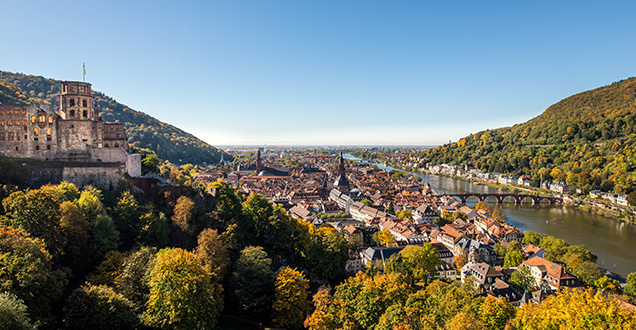
The city
Heidelberg is beautiful
Heidelberg is considered one of the most beautiful cities in Germany. The picturesque ensemble of the castle, the Old Town, and the river Neckar surrounded by hills, which inspired the poets and artists of romanticism, still fascinates millions of visitors from all over the world today. But there's more to Heidelberg than romanticism.
Heidelberg is a city of science. It is home to Germany's oldest university, as well as to numerous others, and to a host of internationally renowned research institutes and research-based companies. The International Building Exhibition (IBA) shows the city and the scientific community working together even more closely in the future.
Heidelberg is international. About 11.9 million visitors from all over the world come to the city each year. The population, too, is international: an estimated 56,000 of Heidelberg's inhabitants have an immigrant background – many of them are scientists and students.
Heidelberg is green. The combination of attractive countryside, favorable climate and urban lifestyle makes Heidelberg one of the leading cities in Germany in terms of leisure value. In addition, the city has received multiple awards for its commitment to the environment.
Heidelberg has a history. First mentioned in 1196, Heidelberg was planned and built, together with the castle, in the 13th century. Heidelberg's heyday as the capital of the Electoral Palatinate began not least with the foundation of the university – today the oldest in Germany – in 1386. Heidelberg was one of the few major German cities to be largely spared the destruction of the World War II. The City of Heidelberg is divided into 15 districts.







